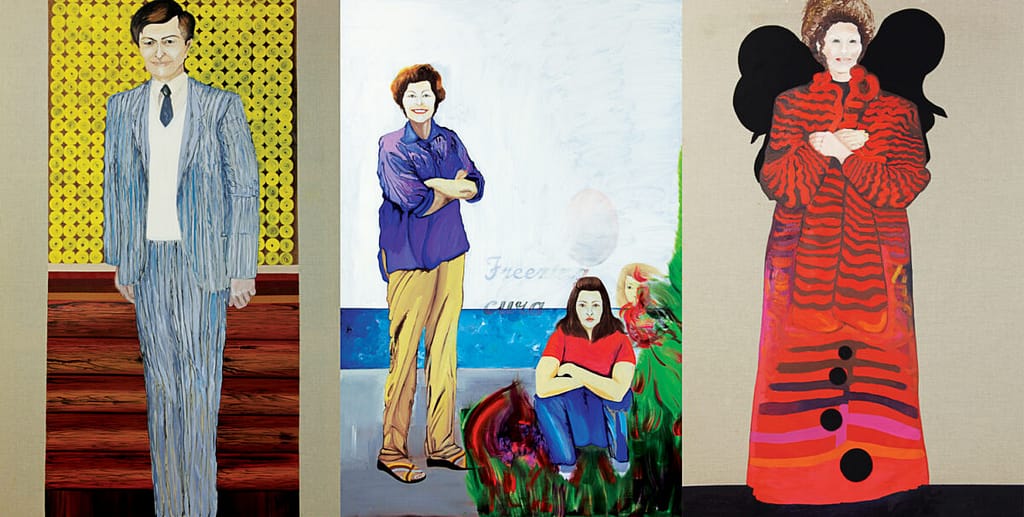



Italian Pavillion
Curated by Vittorio Sgarbi
June 4 – November 27, 2011
Exhibition text by Edward Lucie-Smith
At the 54° Biennale, Italian Pavilion, the artist presents a triptych of large-format oil portraits inspired by autobiographical. These paintings usually arise from a gaze into the artist’s past, gathering memories and discovering fragments left behind and reassembled on the table—composed of objects, clothes, letters, and photographs. From here, a story begins, sometimes written, but then always erased by the canvas. Autobiography becomes the pretext for recurring elements, such as rooms, faces, and objects. Photography has the power to block the memory and freeze it in an image; painting has the power to change that image, which is closely linked to reality in the archetype that this represent for the artist. Daylight brightens the colors in a Surrealistic atmosphere frozen and panicky, but brilliant, sunny, descriptive but concise, alternating with flat chromatic backgrounds and vibrant brushstrokes. The photo, when chosen by the artist to create a painting, is a deep precipice, it is something else from reality, it’s an abstract symbolic synthesis in which what emerges are aspects of emotional memory in the hidden, symbolic details. But more importantly, it is the idea of freezing and suspension which implements the photograph, what the painting is trying to highlight. It triggers a silent dialogue with the captured image of the artist on paper, an image that gives rise to a symbolic icon, well away from the idea of mimesis in the picture itself, but rather a reinterpretation of the feeling of lived experience, that the photo has left, and memory has macerated.
Alla 54° Biennale, Italian Pavilion l’artista presenta un trittico di ritratti a olio di grande formato ispirati a temi autobiografici. Questi dipinti nascono solitamente da uno sguardo sul passato dell’artista che raccoglie ricordi e scopre frammenti lasciati e ricomposti sul tavolo, fatti di oggetti, vestiti, lettere, fotografie. Da qui ha inizio una storia, a volte scritta, ma poi sempre cancellata dalla tela. L’autobiografia diventa il pretesto per il ricorrere di alcuni elementi come stanze, volti, oggetti. La fotografia ha il potere di bloccare la memoria e congelarla in un’immagine, che è strettamente legata alla realtà nell’archetipo che essa rappresenta per l’artista. La luce ravviva i colori in un’atmosfera surreale, gelida e angosciosa e al tempo stesso brillante e solare, descrittiva ma concisa, in cui si alternano piatti sfondi cromatici e pennellate vibranti. La foto scelta dall’artista per creare un dipinto diventa un precipizio profondo, qualcosa di avulso dalla realtà, una sintesi simbolica astratta, in cui ciò che emerge sono aspetti della memoria emotiva, conservata nei dettagli più nascosti; ciò che il dipinto cerca di mettere in evidenza, tuttavia, è soprattutto l’idea di congelamento e sospensione che la fotografia mette in atto. Il dipinto innesca un dialogo silenzioso con l’immagine catturata sulla carta, che dà vita a una rappresentazione simbolica, ben lontana dall’idea di mimesi contenuta nell’immagine stessa, ma più vicina a una reinterpretazione del sentimento dell’esperienza vissuta che la foto ha lasciato e che la memoria ha macerato.
The family, Da, Freezing, Mom with red coat, 2011, triptych, oil on linen, 210 x 420 cm, private collection.